Stone Age Britain
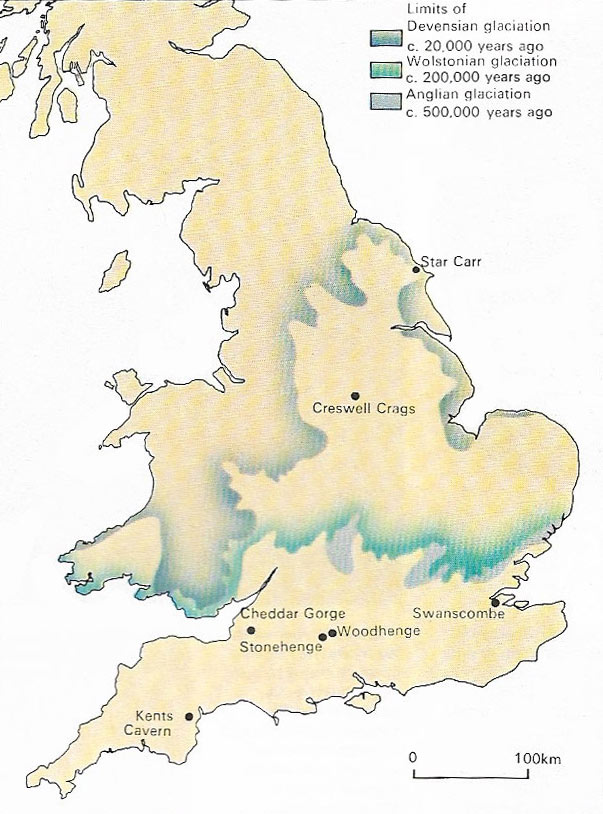
Figure 1. Ice sheets covered much of the British Isles at least four times during the Pleistocene period, also known as the Ice Age. During the Last and best-known glacial period only half of Britain was covered by ice, but tow ice ages earlier, much more of the country was affected – as far south as the valley of the Thames. Temperatures were much lower than today in the glacial periods, and arctic conditions prevailed even south of the ice itself. As a result, there was no human settlement at those times. But the ice ages were separated by warmer "interglacial periods", when temperatures were at least as warm as at present. Shorter mild phases, or "interstadials", occurred within the main ice ages themselves. In these warmer periods, men crossed the land-bridge linking Britain with the European continent and settled, only to retreat to their former homes when the cold returned.
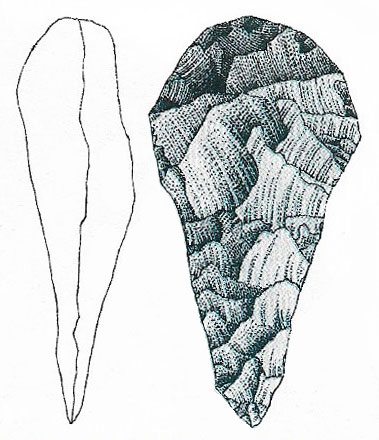
Figure 2. Hand-axes made of flint are among the earliest tools found in Britain. They could be used for cutting, scraping or hammering. Such axes occur throughout Europe, Africa and Southern Asia.
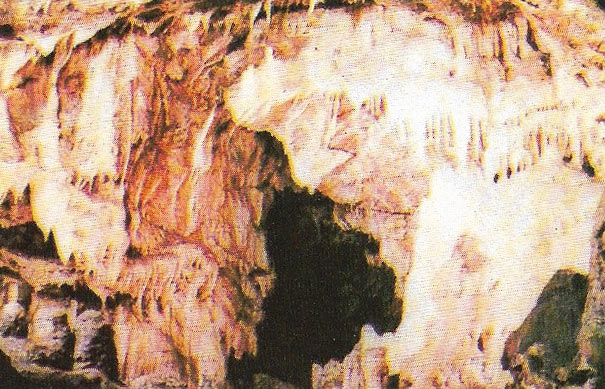
Figure 3. Kent's Cavern, Devon, and similar caves elsewhere, provided shelter from the elements for the people who settled in Britain during the interstadial periods of the most recent ice age.
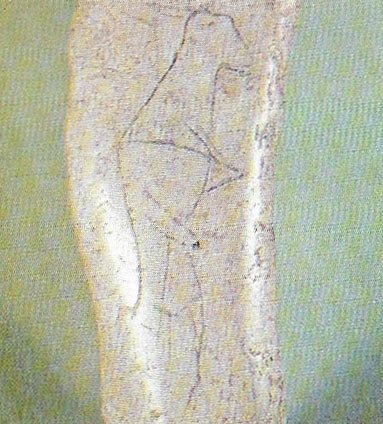
Figure 4. A carving of a male figure, scratched on an animal's rib bone, is probably about 12,000 years old, and was found in Pin Hole Cave, Derbyshire. The people who inhabited Britain during the last ice age did not decorate their caves with fine many-colored paintings of animals as their contemporaries at Lascaux, France, or Altamira, Spain, did. Conditions of life at the extremities of Europe were probably too harsh to support such a high level of cultural activity.
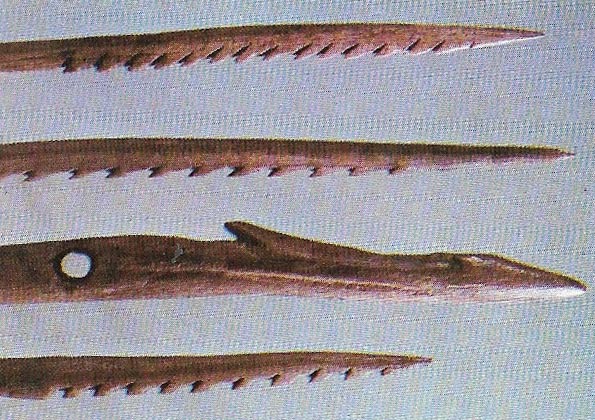
Figure 5. Barbed points of antler or other bone that might have been used for either hunting or fishing were numerous at Star Carr in eastern Yorkshire, one of the most fully explored Mesolithic sites in Britain. A lakeside platform of felled birch branches supported a small community by hunting the smaller animals such as deer in about 7500 BC. At that time, after the final retreat of the ice, open birch woodland began to give way to pine.
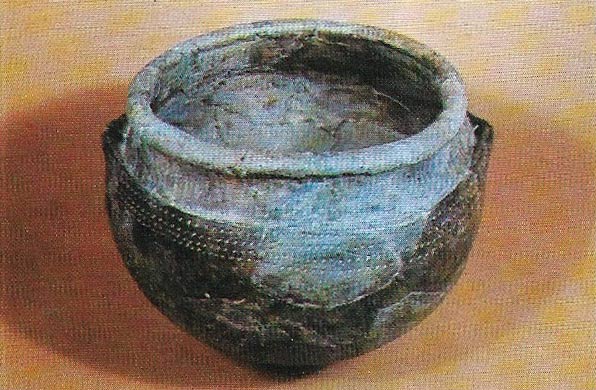
Figure 6. The art of making pots was one of the skills introduced to Britain by the first farmers. The early pots were hand-made and cored at fairly low temperatures in open pit fires. It is therefore usually assumed that they were made domestically. But even such simple pots were sometimes traded over considerable distances.
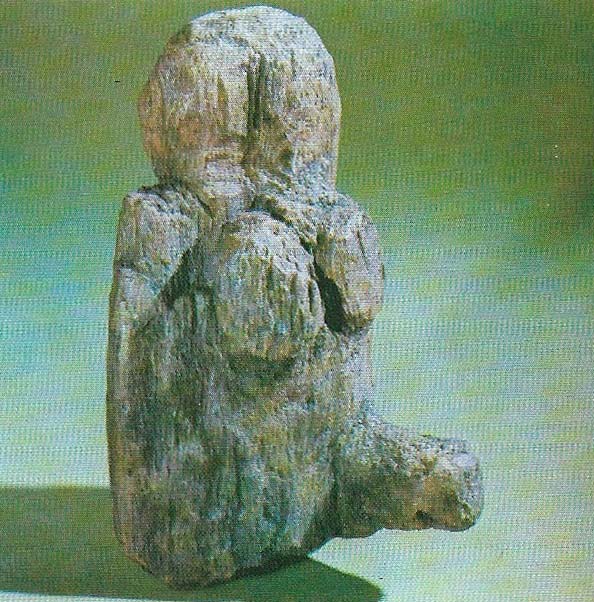
Figure 7. This Neolithic wooden figure shows both male and female sexual characteristics and therefore probably represents a prehistoric deity. Evidence of the early settlers is limited in Britain, because few cult figurines of the type common in Europe and Asia have been found. This example comes from the Somerset levels.
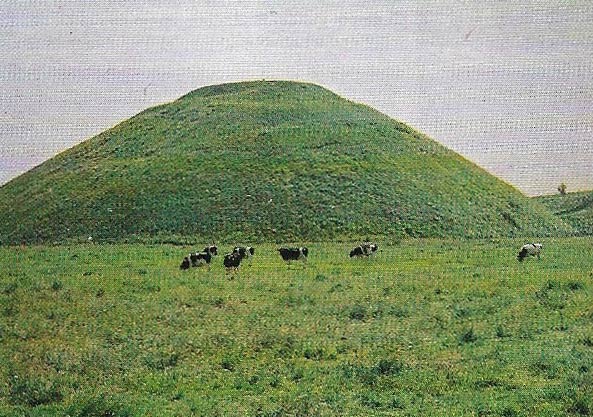
Figure 8. Silbury Hill, Wiltshire, is close to another important Neolithic ritual site at Avebury. It is the largest man-made mound in Europe, and is conical in shape, 40 meters (131 feet) high. It was built in three stages; the first consisted of a gravelly clay core capped by a turf stack within a ring of stakes and covered by mixed materials. This is immediately overlaid by the second stage, which consisted of a chalk mound and a surrounding ditch. In the third stage the ditch was filled in and the chalk mound extended to cover a larger area. The whole process was continuous and took place about 2700 BC. It's purpose remains a mystery. Excavations have shown no sign of burials; it may have been a sanctuary with a temple on top.
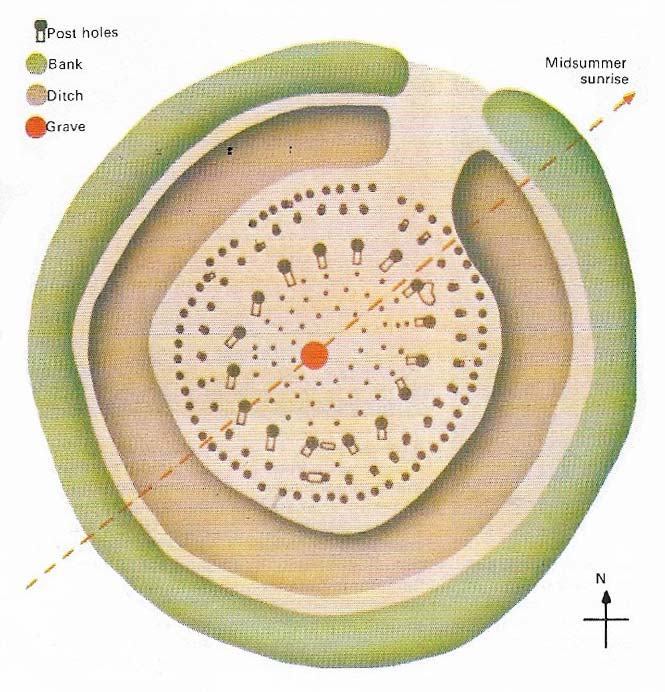
Figure 9. Woodhenge gets is an example of a small henge (a circular Neolithic earthwork). It is 3 kilometers (2 miles) north of Stonehenge, and is immediately south of the vast monument of Durrington Walls. Inside Woodhenge there are six concentric rings of holes that originally contained wooden posts. They are thought to be the remains of a wooden building with an open light in the center on the axis of the building, near the center, is a grave of a child about three years old with a cleft skull, one of the few examples of ritual sacrifice in Britain. The settings of the posts are oval in plan, and the long axis points in the direction of the midsummer sunrise, like the axis of Stonehenge. Woodhenge was built about 2300 BC.
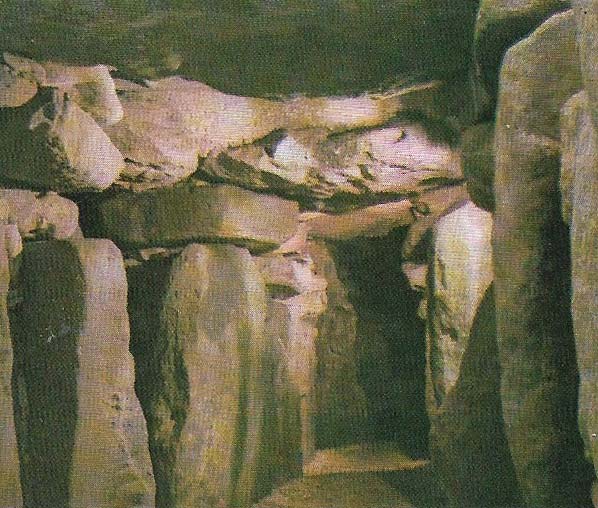
Figure 10. Monumental tombs, such as this one at West Kennet, Wiltshire, were often built by Neolithic inhabitants of Britain. Such tombs were used for many generations, and were closed after each burial and reopened for the next. The bones of earlier burials were heaped together to make room for the new arrival.
Although traces of still earlier occupation are beginning to come to light, the first really clear evidence of human settlement in Britain belongs to a time about a quarter of a million years ago. At that time the country enjoyed a mild climate and favorable environment conditions between two ice ages (Figure 1).
Swanscombe man and the ice ages
The population lived in small groups and occupied open-air sites along river valleys and lakesides. They were efficient hunters, catching large game such as now-extinct forms of elephant, and rhinoceros, as well as horse, wild ox, red deer and fallow deer. One of the most important sites of this period, at Swanscombe, just south of the River Thames in Kent, has yielded three fragments of the fossil skull of what is now believed to have been a young woman. Swanscombe "man" is usually classified as the earliest known example of the modern species Homo sapiens.
After the occupation of this period, which is sometimes known as the Great Interglacial, there are a number of sites that can be dated either to warmer phases within the next glaciation (c. 200,000–125,000 years ago) or to the last interglacial period (c. 125,000–100,000 years ago). These sites indicate that men continued to visit Britain, at least during the milder climatic phases. With the beginning of the last ice age, c. 100,000 years ago, modern understanding of human activity in Britain becomes much clearer. Probably on four separate occasions during warmer climatic phases, small groups of hunters moved into Britain across a land-bridge from the continent of Europe and settled in caves and rock shelters in England and Wales (Fig 3). Some of the best known sites of this date occur in Cheddar Gorge, Somerset, and there is another group in Derbyshire. Occupation of Britain still remained very scarce and occasional.
Britain after the ice ages.
About 14,000 years ago the climate began to become warmer once again and the ice sheets began their final retreat. As conditions improved, the vegetation altered, and about 10,000 years ago the open tundra of the glacial periods began to be replaced by forests. At first these forests of birch, and pine, both cold-loving species: later hazel, oak, elm, lime, and elder grew too, forming the so-called "Mixed Oak Forest". These changes in flora were accompanied by changes in fauna also; open-country animals such as horse, reindeer, bison, and mammoth disappeared and were replaced by woodland forms such as red deer, roe deer, elk, wild ox and wild boar.
The human population had to adapt to all these changes in climate, vegetation and animal life. Some groups, such as the one that settled at Star Carr in Yorkshire c. 7500 BC, adapted their way of life to forest conditions (Figure 5). They used plant foods such as hazel nuts and learned to hunt the woodland animals that moved singly in the forest, unlike the herd animals that their ancestors had hunted on the tundra. They learned to use timber and they had the first true stone axes.
Other groups settled along the seashore to exploit coastal resources, such as fish and shellfish. During this period Britain became permanently and island. As the ice sheets melted, large quantities of water were released into the sea, and the sea-level (which had been much lower than at the present during the glacial periods) rose. The last land-bridge connecting Britain to continental Europe was submerged c. 6000 BC. The Mesolithic people – as the hunting groups of the post-glacial era are known – probably used boats, both along the coasts and across stretches of water. Both Scotland and Ireland were settled for the first time during the Mesolithic period.
The introduction of agriculture
Some time before 4000 BC a new wave of settlers arrived in Britain from the European continent. These Neolithic immigrants introduced a whole new way of life based on farming, rather than on hunting and gathering. They cultivated wheat and barley and they bred domesticated cattle, swine, sheep and goats. They introduced new techniques, including the manufacture of pottery (Figure 6) and the production of ground and polished stone implements. These farmers were more numerous than the early hump tees and they left far clearer traces of their activities. Not many settlement sites of this period are known, but monumental tombs (Figure 10) survive, as well a central meeting places or fairgrounds ("causwayed camps"), strange linear earthwork enclosures ("cursus monuments") and, rather later, the sanctuary sites ("henge monuments" (Figure 9)), of which the most famous are Avebury and Stonehenge. The sites from which they obtained the raw materials used for axes are also known, such as the mines at Grimes Graves in Norfolk and Great Langdale in Cumbria.
The first farmers in Britain probably had an egalitarian social organization without marked differences in rank or wealth. But it seems likely that by the later part of the Neolithic period, in the 3rd millennium BC, a more hierarchical society had evolved. The construction of the five largest henge monuments probably involved about one million man-hours of work, while the two largest cursus monuments and the artificial mound of Silbury Hill (Figure 8) probably required more than ten million man-hours. The organization of manpower, materials and food supply required for these vast projects could have been undertaken only by ranked society with a chief at its head.
Barbed points of antler or other bone that might have been used for either hunting or fishing were numerous at Star Carr in eastern Yorkshire, one of the most fully explored Mesolithic sites in Britain. A lakeside platform of felled birch branches supported a small community by hunting the smaller animals such as deer in about 7500 BC. At that time, after the final retreat of the ice, open birch woodland began to give way to pine.
